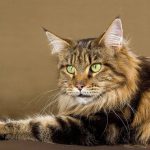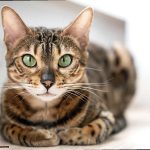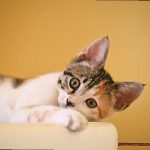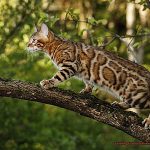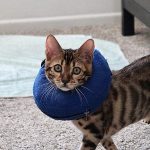Cats are notorious for being picky eaters, and the same goes for their drinking preferences. As a responsible pet owner, it’s crucial to ensure that your feline friend stays hydrated, as dehydration can lead to serious health issues. But what if your cat refuses to drink plain old water?
Don’t worry; there are plenty of other hydration options available that will entice even the fussiest of cats. In this blog post, we’ll explore various fluids that cats can drink for hydration, from specially designed drinking fountains to diets that support hydration.
But it’s not just about finding alternative beverages; it’s also essential to understand the benefits of different hydration options and learn some tips and tricks to encourage your cat to drink more. Whether you’re a seasoned cat owner or a new one, gaining insight into various hydration options can make a huge difference in your pet’s overall health and well-being.
So join us as we delve into the fascinating world of cat hydration and discover the best options that your furry friend will love.
Water: The Best Option for Hydration
The answer is simple: water.
Why is water the best option? Let’s take a closer look:
- Water helps maintain bodily functions: Just like humans, cats need water to regulate their body temperature, aid in digestion, and transport nutrients throughout their bodies. Without sufficient water intake, cats can become dehydrated, which can lead to serious health problems such as urinary tract infections and kidney disease.
- How much water do cats need? Experts recommend that cats drink at least one ounce of water per pound of body weight every day. So, if you have a ten-pound cat, they should drink at least ten ounces of water daily. However, this amount may vary depending on factors such as age, activity level, and diet.
- Fresh and clean water is essential: It’s crucial for cat owners to ensure that their pets have access to clean and fresh water at all times. Cats often prefer running water, so investing in a cat fountain or leaving a dripping faucet can encourage them to drink more. Additionally, it’s important to keep their water bowl clean and replace the water frequently, especially during hot weather when they are more likely to become dehydrated.
- Wet food can also help with hydration: If your cat eats wet food, they are already getting some of the moisture they need. However, it’s important to choose high-quality wet food options that don’t contain too many fillers or high levels of salt.
- Beware of other beverages: While some cat owners may consider giving their cats flavored water or other beverages such as coconut water or bone broth, it’s essential to consult with a veterinarian before introducing any new drinks into your cat’s diet. Some flavors may contain ingredients that are toxic to cats, and certain drinks like coconut water may contain too much sugar for them.
Milk: Not a Primary Source of Hydration

One popular belief is that cats love and need milk to stay hydrated, but in reality, milk is not an ideal source of hydration for cats.
Firstly, many cats are lactose intolerant, meaning they lack the enzyme needed to digest lactose, the sugar found in milk. This can cause digestive upset and diarrhea if they consume too much milk. Even if your cat can tolerate lactose, milk should not be their primary source of hydration.
Milk is high in calories and fat, which can lead to obesity and other health problems if consumed in excess. Instead, water should be your cat’s go-to drink. Keep fresh, clean water available at all times, and encourage your cat to drink by placing multiple bowls around the house or using a pet fountain.
If you notice that your cat is not drinking enough water, there are several ways to supplement their hydration levels. Wet food has a higher moisture content than dry food and can be an excellent way to increase their water intake. Adding water or low-sodium chicken broth to their food can also motivate them to drink more.
You may also want to try flavored water or low-sodium broths as an alternative to plain water. However, avoid giving your cat sugary drinks or human beverages like juice or soda as these can be harmful to their health.
Encouraging Cats to Drink More Water
Unfortunately, many cats don’t drink enough water on their own, which can lead to dehydration and other health issues. But fear not – there are several proven strategies for encouraging your cat to drink more water.
Firstly, it’s crucial to provide your cat with fresh, clean water at all times. Cats are picky drinkers and may turn their nose up at a dirty or stale water bowl. Therefore, it’s essential to clean their water bowl regularly and replace the water daily.
Another effective method for increasing your cat’s water intake is by offering them wet food. Wet food has a higher moisture content than dry food, which can help keep your cat hydrated. You can also add a small amount of water to their food to increase their fluid intake.
If your cat seems uninterested in plain water, try adding flavor to it. A small amount of tuna juice or chicken broth can make their water more enticing. Just be sure to use low-sodium broth and avoid sugary drinks or human beverages that could harm your cat’s health.
Providing multiple sources of water around the house can also encourage cats to drink more. By having several water bowls in different areas of the house, you can ensure that they always have access to fresh drinking water.
Lastly, consider investing in a pet fountain or faucet that provides a continuous flow of fresh, filtered water. Many cats prefer drinking from a running source of water rather than still water in a bowl.
Wet Food: A Secondary Source of Hydration
One oft-overlooked aspect of feline health is hydration. That’s where wet food comes in as a secondary source of hydration.
Wet food contains a high percentage of water, with most varieties boasting around 75% water content – significantly higher than dry cat food. This means that incorporating wet food into your cat’s diet can help keep them hydrated, ensuring their overall health and well-being.
Dehydration can have serious consequences for cats, including urinary tract infections and kidney disease. By feeding your cat wet food, you can help prevent these issues from occurring. However, it’s essential to note that not all wet cat foods are created equal. Be sure to read labels carefully to ensure the brand you choose has optimal water content and calorie balance.
So why should you consider wet food as a secondary source of hydration for your feline friend? Here are some key benefits:
- Prevent Health Issues: Proper hydration can help prevent numerous health problems in cats, from urinary tract infections to kidney disease.
- Encourage Drinking: Cats can be fussy about drinking water, making it difficult to ensure they’re getting enough hydration. Wet food makes it easier to encourage them to drink more without any extra effort on your part.
- Provide Variety: If your cat gets bored with the same dry food every day, incorporating wet food into their diet can provide variety and add a treat-like element to mealtime.
- Easy to Digest: Wet food is easier on cats’ digestive systems than dry food, making it an excellent choice for older cats or those with sensitive stomachs.
Flavored Waters and Other Beverages: Risks Involved
Giving your cat flavored waters and other beverages may not be the best option. In fact, it can be harmful to their health.
One of the biggest concerns with flavored waters and other beverages is the added sugars and artificial sweeteners they often contain. These ingredients can cause digestive issues and even lead to obesity and diabetes in cats. So, if you’re thinking about sharing your sweet tea or soda with your cat, reconsider.
But it’s not just the sugar content that’s problematic. Some flavored waters and other beverages also contain caffeine or other stimulants that are toxic to cats in high doses. Your sleepy cat may seem like a good candidate for a pick-me-up, but avoid the energy drink.
In addition to these risks, some flavored waters and other beverages can actually dehydrate your cat rather than quench their thirst. This is because they often have high levels of sodium or other electrolytes that disrupt their natural hydration balance. To ensure your cat stays properly hydrated, stick to plain water or specially formulated cat hydrating solutions.
It’s important to always read labels and avoid giving your cat any drink that contains potentially harmful ingredients. While flavored waters and other beverages may seem like a tempting option, it’s best to prioritize your cat’s health over their taste buds. Opt for water or specially formulated hydrating solutions instead.
How Much Water Do Cats Need?
One of the most important things you can do for your cat’s wellbeing is to provide them with access to clean and fresh water at all times. But how much water do cats need each day? And why is it crucial to monitor their drinking habits? Let’s explore these questions in more detail.
At first glance, it may seem like cats don’t need much water. After all, they get most of their hydration from the food they eat in the wild. However, domestic cats often don’t get enough water from their food, making it necessary to provide them with plenty of fresh water to drink.
So, just how much water do cats need each day? The amount of water a cat requires varies based on several factors such as age, weight, diet, and activity level. As a general rule of thumb, cats should consume around 3.5-4.5 ounces of water per 5 pounds of body weight each day. For example, a 10-pound cat should drink approximately 7-9 ounces of water per day.
However, some cats may need more or less water than others due to various reasons such as their diet. Cats who eat dry kibble require more water than those who eat wet food because dry food contains less moisture. Additionally, cats who are pregnant or nursing or those on medication may require more water than usual.
As a responsible cat owner, it’s crucial to monitor your cat’s drinking habits regularly. Any sudden changes in their drinking patterns may indicate an underlying health problem that requires medical attention. If you notice that your cat is drinking significantly more or less than usual or if their urine output has changed, consult with your veterinarian immediately.
Signs of Dehydration in Cats
Dehydration in cats can lead to severe health issues, making it essential to recognize the signs before they become serious. So, let’s take a closer look at the subtle signs of dehydration in cats and how you can prevent it from happening.
Dehydration Signs:
Your cat may show various signs of dehydration, including a dry mouth, sunken eyes, lethargy, loss of appetite, and decreased skin elasticity. If you suspect your cat is dehydrated, there are several ways to check. Gently pinch the skin on the back of their neck and let go; if the skin snaps back into place quickly, then your cat is well hydrated. However, if the skin takes a few seconds to go back to its original position, then your cat may be dehydrated. Additionally, pay attention to your cat’s litter box habits; if your furry friend is not urinating frequently or their urine is concentrated and darker in color, this could also be a sign of dehydration.
Preventing Dehydration:
To prevent dehydration in cats, ensure they have access to clean and fresh water at all times. Cats also benefit from wet food with high moisture content. Avoid feeding your cat a solely dry food diet as it contributes to dehydration. Remember that prevention is key when it comes to keeping your cat hydrated and healthy.
Consulting with a Veterinarian:
It’s important to note that these signs of dehydration can also be indicative of underlying health issues. Therefore, it’s best to consult with a veterinarian if you suspect that your cat may be dehydrated to rule out any other health concerns.
Preventing Dehydration in Hot Weather
As the sun beats down during hot weather, dehydration can quickly become a severe issue for your beloved feline friend. Fortunately, there are several ways to prevent dehydration and keep your cat healthy and happy all summer long.
The first step is to make sure your cat has plenty of access to fresh, clean water. Cats drink less water than dogs, so it’s essential to monitor their water intake and encourage them to drink more. Consider investing in a fountain or a water bowl that is refilled frequently to entice your cat to drink more water.
Including wet food in your cat’s diet is another great way to keep them hydrated. Wet food has a higher moisture content than dry food and can help prevent dehydration. You can also add some water or chicken broth to their food to increase their fluid intake.
To beat the heat, provide your cat with a shaded area to rest and play in. You can also use a fan or air conditioning to help keep the temperature down indoors. Keep an eye on your cat’s behavior and signs of discomfort as cats are sensitive to heat.
Finally, be vigilant for signs of dehydration such as lethargy, sunken eyes, dry mouth, and loss of skin elasticity. If you notice any of these signs, seek veterinary care immediately.
Conclusion
In conclusion, keeping your furry feline hydrated is paramount to their health and happiness. Although water is the go-to option for hydration, some cats can be finicky and refuse to drink it. Fortunately, there are other creative ways to quench your cat’s thirst.
One excellent way to supplement your cat’s hydration levels is by feeding them wet food with high moisture content. You can also add flavored water or low-sodium broth to their diet to make drinking more enticing. However, steer clear of sugary drinks or human beverages like juice or soda as these can harm their health.
It’s crucial to encourage your cat to drink more water and provide fresh, clean water at all times. Having multiple sources of water around the house can also help increase their fluid intake.
Remember that dehydration in cats can lead to severe health problems such as urinary tract infections and kidney disease. Therefore, it’s vital to monitor your cat’s drinking habits regularly and seek veterinary advice if you notice any sudden changes in behavior.
Overall, prioritizing your cat’s hydration needs will ensure they remain healthy and happy companions for years to come.
